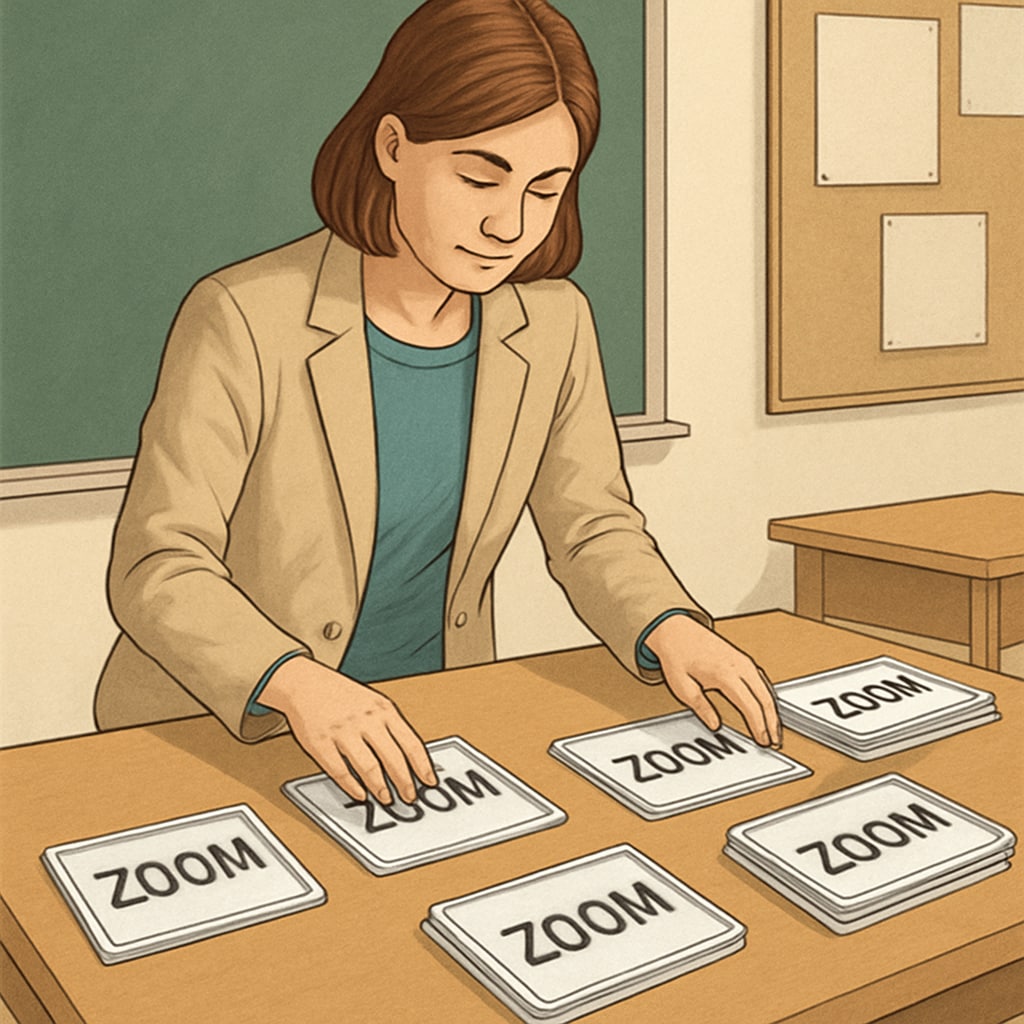Zoom and ReZoom teaching activities have become increasingly popular tools in K12 education, known for their ability to engage students and develop essential skills such as observation and logical thinking. These activities challenge learners to think critically and collaboratively, as they work to reconstruct a sequence of images or events. However, teachers often face challenges such as managing resources like answer sequences. This article delves into the educational value of these activities, provides practical implementation tips, and offers solutions to common resource-related issues.
The Educational Value of Zoom and ReZoom Activities
Zoom and ReZoom activities are based on a sequence of illustrations or photographs that depict a zoomed-in or zoomed-out perspective. The objective is for students to arrange the images in the correct order, forming a cohesive narrative. This process encourages:
- Observation skills: Students must pay attention to fine details in the images.
- Logical reasoning: By analyzing the relationship between images, students develop sequencing and problem-solving abilities.
- Collaboration: When conducted in groups, these activities enhance teamwork and communication skills.
For example, a Zoom activity might begin with a detailed image of a leaf, and subsequent images reveal the larger context—a branch, a tree, and eventually a forest. Students must use clues to determine the correct order, which sharpens both their critical thinking and their ability to synthesize information.

Practical Tips for Implementing Zoom and ReZoom in the Classroom
To maximize the impact of Zoom and ReZoom activities, follow these practical tips:
- Prepare materials in advance: Ensure all image cards are printed, laminated, and organized. Clear labeling can help you manage sets for repeated use.
- Introduce the objective clearly: Begin the activity by explaining the goal and providing a simple example to demonstrate the process.
- Encourage group work: Divide students into small teams and assign roles such as “observer,” “arranger,” or “presenter” to foster collaboration.
- Provide scaffolding: Offer hints or guiding questions to students who may struggle, ensuring that all participants remain engaged.
- Debrief and reflect: After completing the activity, lead a discussion about the strategies used and lessons learned.
By taking these steps, teachers can create a dynamic and inclusive learning environment that supports all students.
Managing Resources and Solving Common Challenges
One common issue educators face when using Zoom and ReZoom activities is the loss or misplacement of answer sequences. Without the correct order, the activity becomes less effective. Here are some strategies to address this challenge:
- Digitize resources: Scan image cards and save digital copies in a secure cloud storage system. This ensures you always have backups available.
- Utilize online databases: Several websites and teaching platforms offer pre-designed Zoom and ReZoom activity sets. Explore these resources to supplement your collection.
- Create your own sequences: Use photo editing software to design custom Zoom or ReZoom activities tailored to your curriculum. This adds a personal touch and addresses specific learning goals.
- Connect with other educators: Join teaching forums or social media groups to exchange activity sets and ideas with peers.
For example, websites like Wikipedia’s Zoom game entry and Britannica’s overview of educational games provide insights into activity design and implementation. These platforms can help teachers find appropriate resources or inspiration for creating new materials.

In addition, maintaining an inventory checklist can prevent resource loss. By numbering or categorizing image sets, teachers can quickly identify missing pieces and replace them as needed.
Conclusion
Zoom and ReZoom activities are powerful tools for enhancing K12 classroom interaction, fostering observation, logic, and collaboration among students. While challenges like missing answer sequences may arise, educators can overcome these obstacles by digitizing resources, utilizing online platforms, and collaborating with peers. By implementing these strategies, teachers can ensure that these innovative activities remain an engaging and effective part of their teaching toolkit.
Incorporating Zoom and ReZoom activities into your curriculum not only supports skill development but also brings an element of fun and creativity to the classroom, making learning a truly interactive experience.


